Analysis
The Rediscovery Backlash: Has the Market for Overlooked Art Historical Talent Peaked?
This year's Art Basel Miami Beach is full of work from the '60s and '70s. But how much of it is actually worth rediscovering?
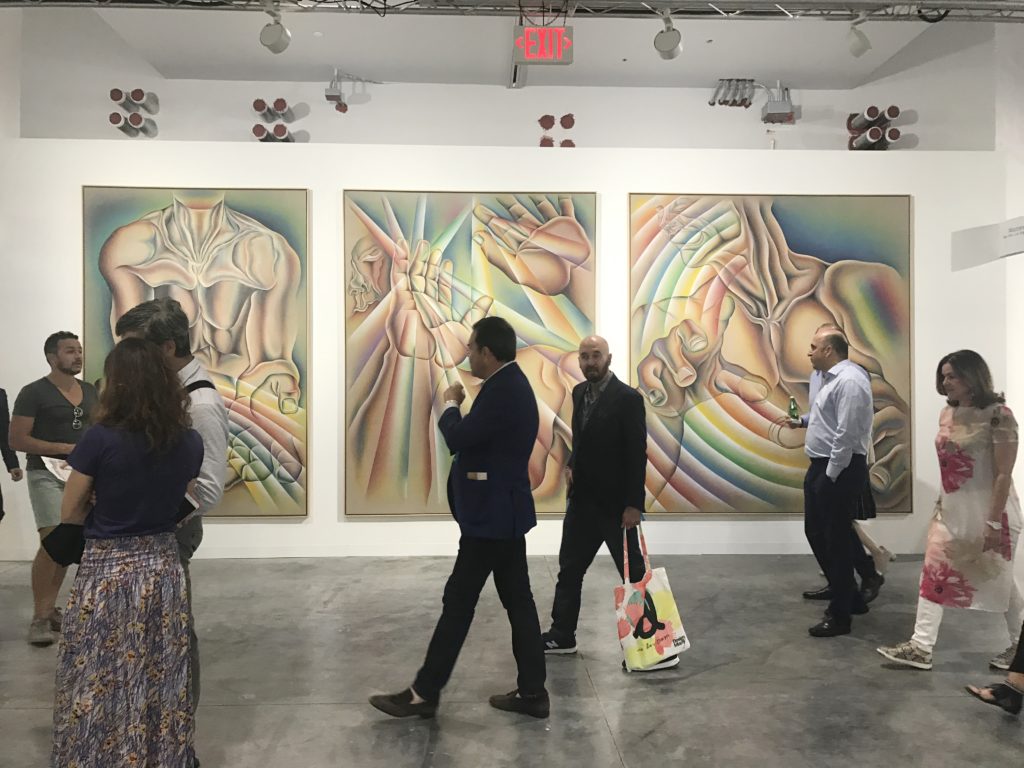
This year's Art Basel Miami Beach is full of work from the '60s and '70s. But how much of it is actually worth rediscovering?

Julia Halperin

![]()
Has the appetite for rediscovered artists from decades past finally hit its peak?
In recent years, galleries have been adding older artists and estates to their stables at a speed that was once reserved for Yale MFA graduates—and the proportion of work on view at Art Basel Miami Beach this week has noticeably tilted in their favor as a result.
Walking through the aisles at the Miami Beach Convention Center, you’d be forgiven for thinking that more art was made in the ’60s,’70s and ’80s than at any other time in the past century. Salon 94, for instance, has given over an entire wall to a mural-sized triptych from 1984 by Judy Chicago, who joined the gallery’s stable last year.
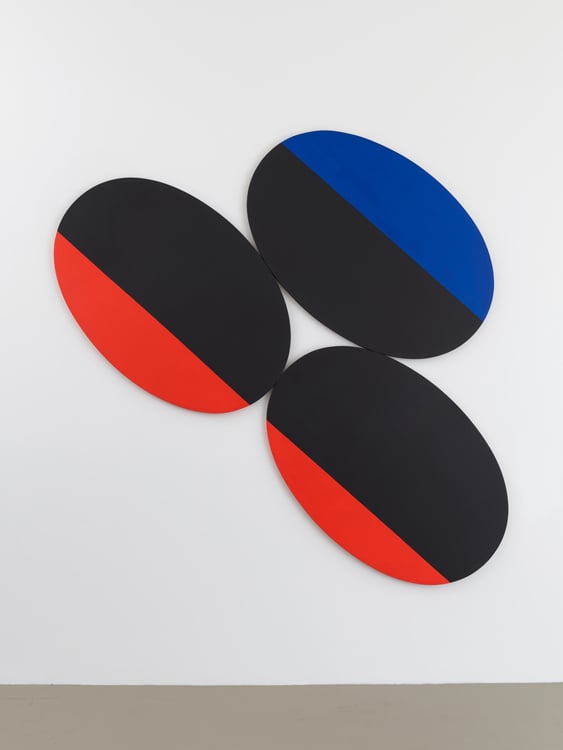
Leon Polk Smith’s Constellation: Blue-Black-Red (1973). Photo: Julia Halperin. Courtesy of the artist and Lisson Gallery.
Lisson Gallery prominently displayed a shaped canvas by Leon Polk Smith from 1973 (priced at $300,000) alongside works from the ’70s by Ted Stamm. The gallery, which sold a 1978 painting by Stamm for $75,000, began representing both estates earlier this year.
Meanwhile, Blum & Poe sold Magic Act II: Reverse Miscegenation (1970), priced at $150,000, by the late Robert Colescott, a brand-new addition to its stable. And Paul Kasmin Gallery sold a 1962 drawing priced at $875,000 by Lee Krasner, whose estate was—you guessed it—picked up by the gallery last year.
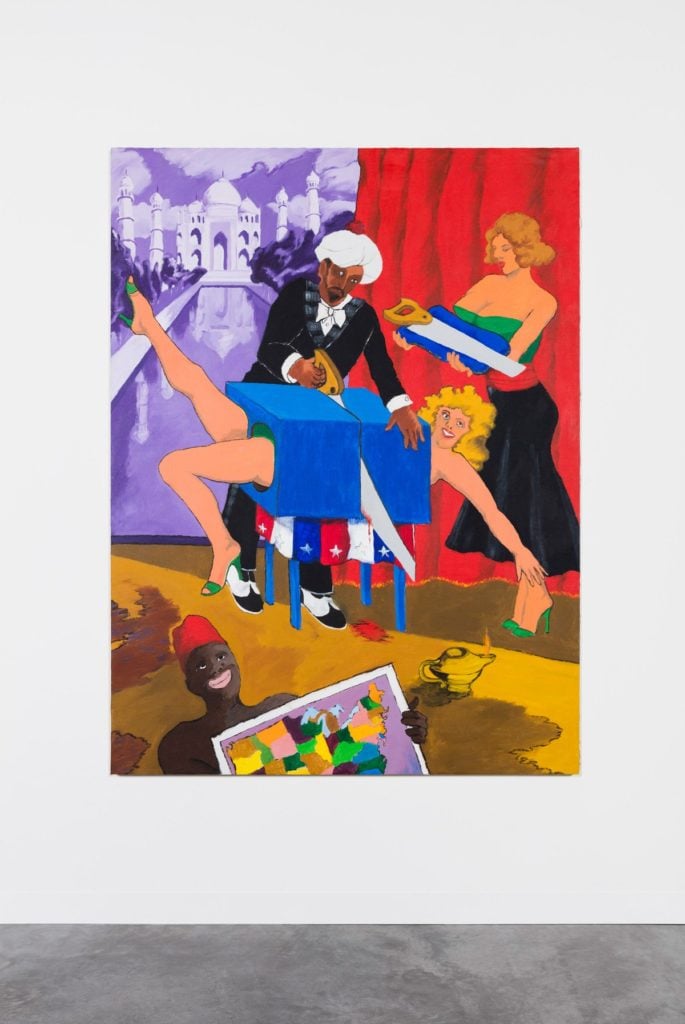
Robert Colescott, Magic Act II Reverse Miscegenation (1970). Image courtesy Blum & Poe.
But the quantity and caliber of work from this period on view at the fair has left some wondering: Has the enthusiasm for overlooked talent gone too far?
“It’s feeling a bit like we are getting to the end of that road,” says the art advisor Todd Levin, the director of Levin Art Group. “This year, the quality really isn’t there for many of these rediscovered artists.”
The yen for overlooked talent began after the financial crisis, as buyers and dealers alike retreated to the stability of history. But the trend picked up considerable speed just two or three years ago, when the frothy market for very young, mostly male artists—like the so-called “Zombie Formalists”—started to cool off.
It was around this time that art fairs, including Art Basel Miami Beach, launched special sections dedicated to art-historical projects, which encouraged smaller and younger dealers to pursue them.
Now, some argue that the pendulum has swung too far in the other direction. “A lot of artists fall through the cracks—but also, not everybody needs to be revived,” says the dealer Garth Greenan, whose gallery specializes in overlooked artists from the ‘60s and ‘70s.
At Art Basel Miami Beach, Greenan is presenting works by three under-recognized Pop artists: Rosalyn Drexler, Allan D’Arcangelo, and Nicholas Krushenick. (One of Drexler’s paintings, priced between $375,000–500,000, is on hold for a major American museum; another was recently acquired by the Whitney Museum of American Art in New York.)
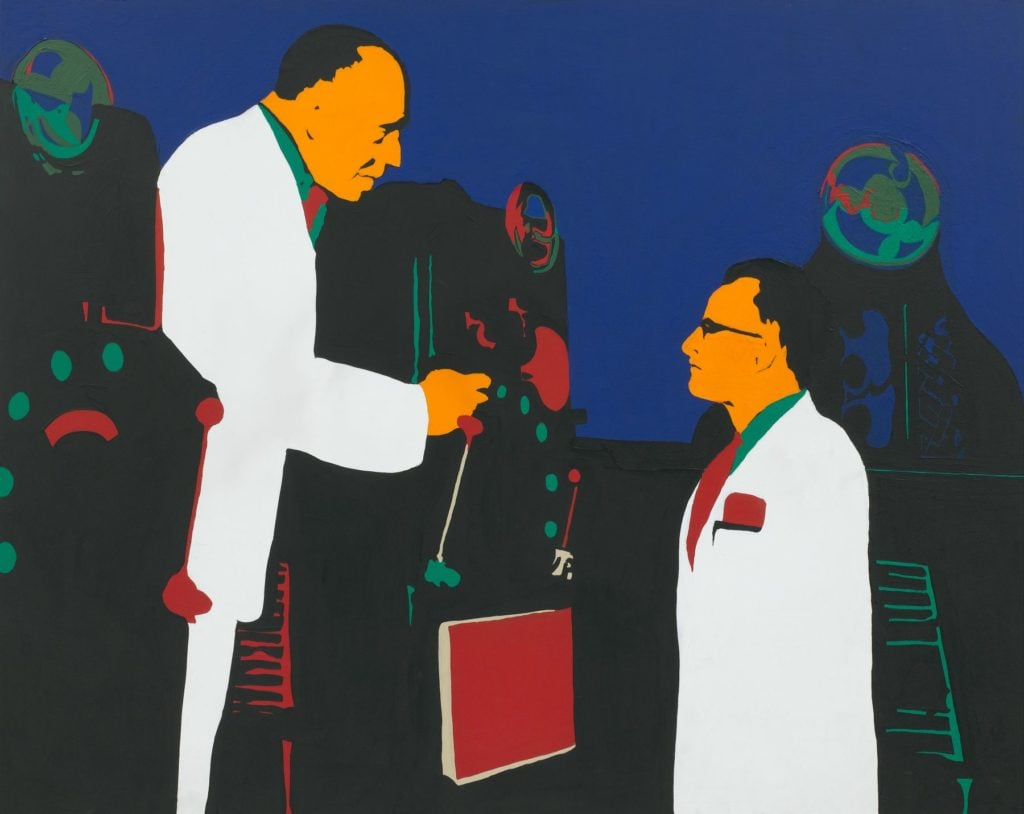
Rosalyn Drexler’s The Lesson (Men and Machines) (1962). Courtesy of the artist and Garth Greenan.
Moving forward, however, Greenan says he is no longer actively hunting for overlooked talent. “We have 16 artists—we’re done,” he tells artnet News.
Similarly, Tim Blum of Blum & Poe—which sold a painting by Quentin Morris from 1977, among other works—worries he cannot continue to mine history without compromising the quality of the art he shows.
The gallery has been particularly active in re-evaluating the art of postwar Japan and is currently planning a major show of Japanese art from the ‘80s and ‘90s—the little-known period “after Mono-ha but before Superflat.” After that show, Blum says, “I will have fully cooked the Japan goose.”
The dealer Fergus McCaffrey—who has had a hand in popularizing both postwar Japanese art as well as the work of older female artists like Carol Rama and Marcia Hafif—is also concerned about over-fishing the art historical waters.
“There are so many galleries focusing on the rediscovery of people now that we almost want to swim against the stream a little,” he says.
At Art Basel, McCaffrey is presenting work from the ’60s and ’70s alongside recent paintings by Kathleen Jacobs (several of which sold for $35,000–75,000) and a performance by the recent MFA graduate Máiréad Delaney, the latest addition to the gallery’s roster.
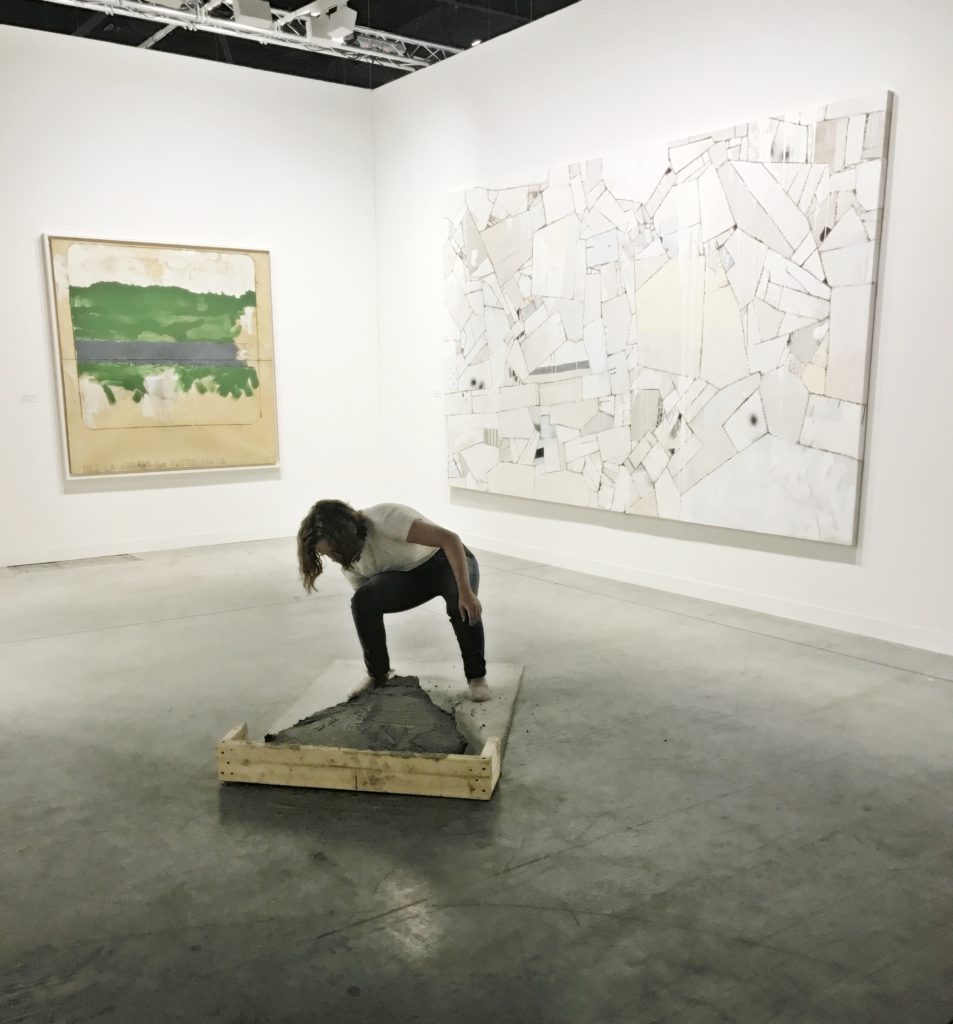
Máiréad Delaney’s performance at Art Basel Miami Beach. Image: Julia Halperin.
These days, McCaffrey says, a painter in her mid-40s who has slipped under the radar feels like more fertile ground for rediscovery than the picked-over ’60s and ‘70s. “There are young and mid-career artists who have been neglected in the past few years,” he says.
He is particularly interested in what he calls the “Lehman Brothers generation”: artists who were just beginning to gain traction when the stock market crashed in 2008. Many of these figures—like Anna Conway, whose work is currently on view at Fergus McCaffrey in New York—were left adrift when their galleries closed amid the crisis and haven’t shown much since.
Overall, most agree that the renewed attention on art of the past is a welcome development and a necessary correction of the art-historical record. Many of the artists who have been at the forefront of this push—women like Krasner and Chicago, for example, and black artists like Colescott—were not given their proper due because of structural racism and sexism in the art world.

Installation view of Judith Bernstein’s work from the 1980s at The Box LA’s booth at Art Basel Miami Beach. Courtesy of the Box LA.
But as more dealers have become interested in plumbing the depths of art history, these “rediscoveries” have extended to “white male friends of talented artists who maybe were forgotten for a reason,” one dealer notes. (Of the minimalist painter Ted Stamm, whose estate was recently picked up by Lisson, the dealer adds: “There’s a reason [Robert] Mangold is famous and he wasn’t, and it’s not because they ran out of Mangolds.”)
Others say the trend has negative ramifications beyond a reduction in quality. They fear that the over-emphasis on history has come at the expense of younger artists and the dealers who invest in them.
“It clearly hurts artists who make art reflecting our time—often new, radical, uncompromised work that many collectors have a harder time absorbing,” says Magda Sawon of Postmasters Gallery. “It hurts dealers like me who commit to locate and present such art.” (At Untitled, Postmasters sold two works by the 28-year-old artist Canyon Castator for $12,000–14,000.)
“The tendency to go overboard with everything is, I think, very American,” Sawon says. “It is also very American to eventually self-correct. So I am hoping for that.”
Of course, not everyone agrees that the market has overreacted. “I think of this as more of a correction,” says the artist Chris Dorland, who has work on view at Super Dakota’s stand at NADA Miami Beach and is also director-at-large at the gallery Magenta Plains. “It’s a healthy reminder that art history isn’t always correct.”
“People aren’t so singular—they look back, forward, and in the middle all the time,” says the dealer Rhona Hoffman. At Art Basel, Hoffman had nearly sold out of works by the 40-year-old artist Nathaniel Mary Quinn (priced between $10,500–60,000) by the end of the VIP preview on Wednesday.
The notion that dealers can singlehandedly steer the market away from deserving talent at any age, she says, imagines that they have “a lot of power they don’t have.”